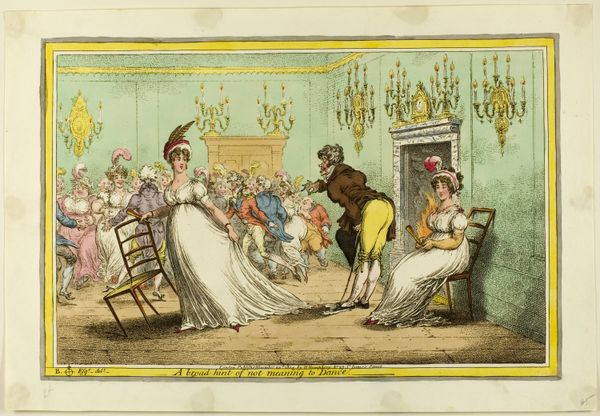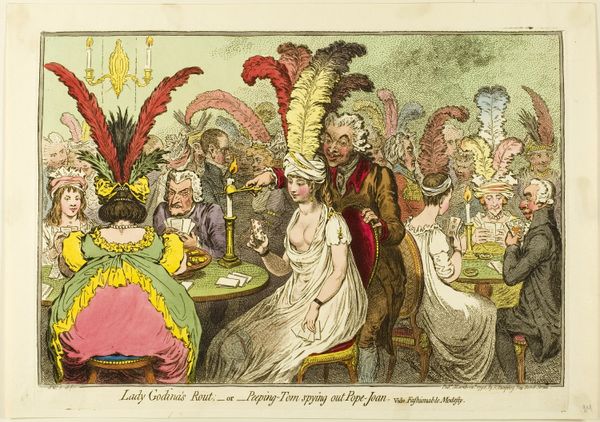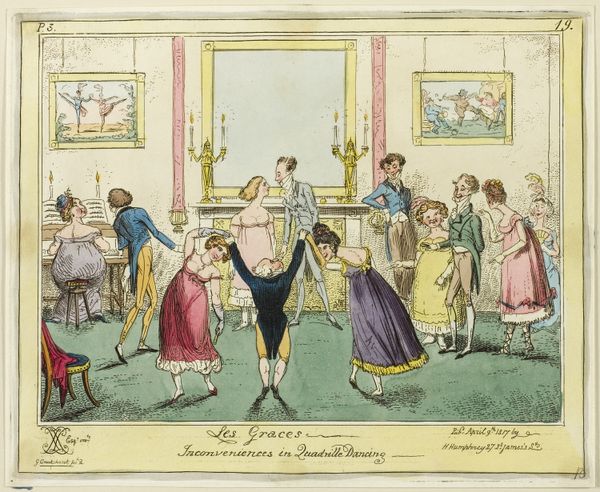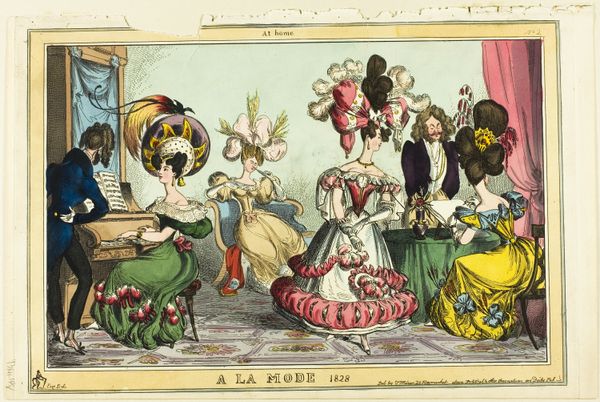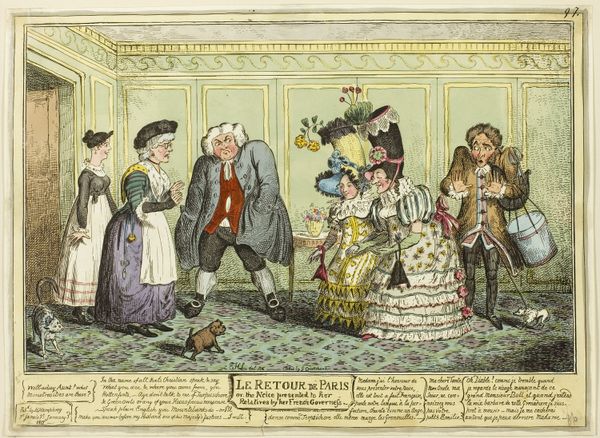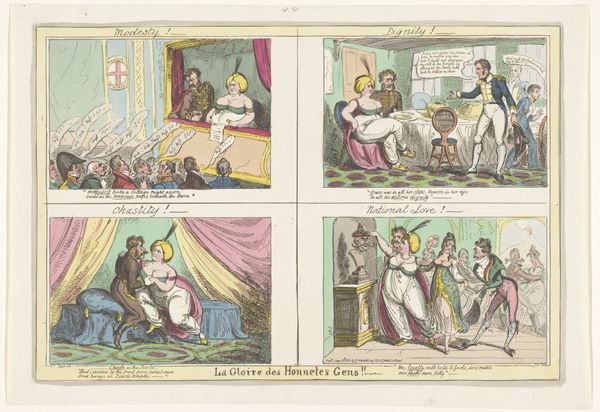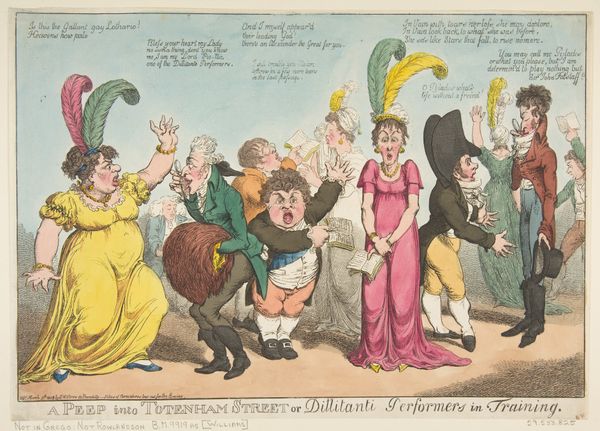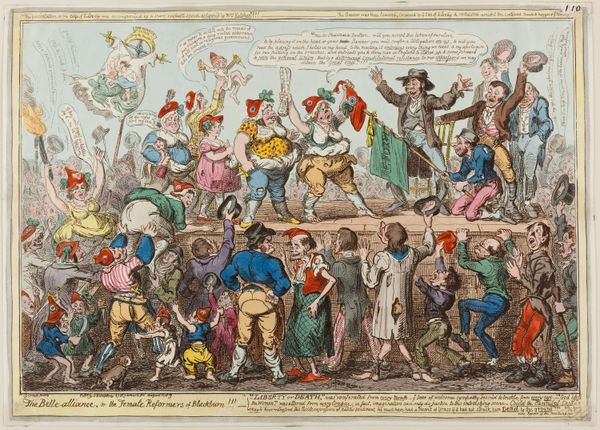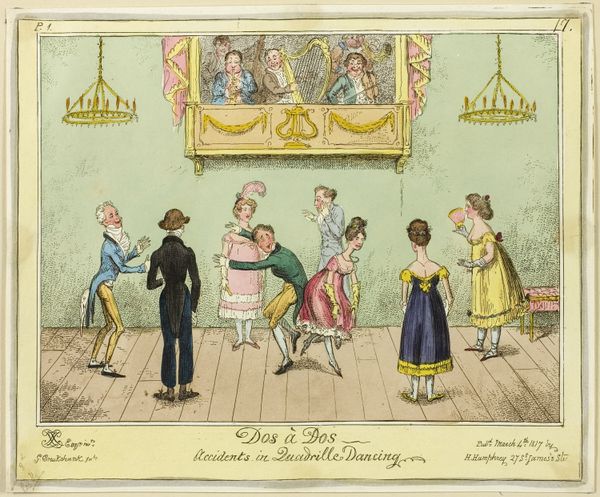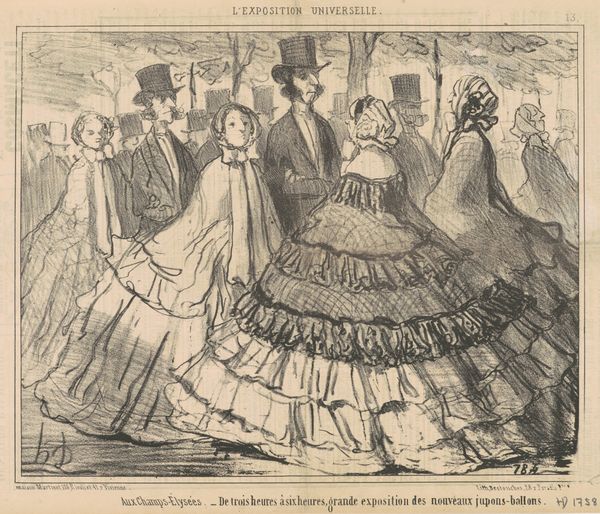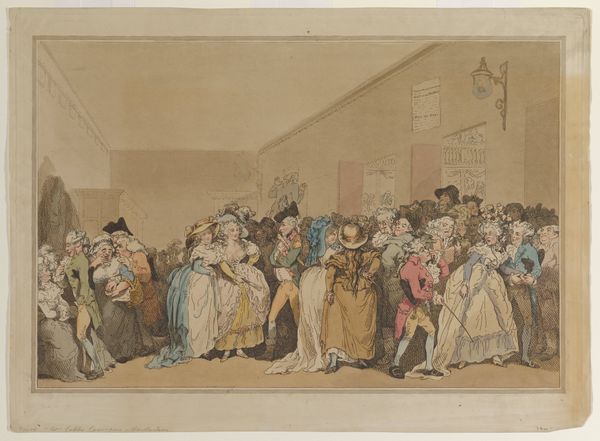
drawing, print
#
drawing
# print
#
caricature
#
romanticism
#
cityscape
#
genre-painting
Dimensions: Sheet: 9 9/16 x 14 1/8 in. (24.3 x 35.9 cm)
Copyright: Public Domain
Curator: This print by William Heath, sometimes known as "Paul Pry," is titled "We Have the Exhibition to Examine." It was made between 1827 and 1829 and, like many works on view here at the Met, offers us insight into the era in which it was produced. Editor: It's quite striking. A chaotic crush of people, mostly women in outlandish hats. The overall effect is less about admiring the art on the walls and more about observing a bizarre social ritual. Curator: Indeed. Heath was a master of caricature, capturing the foibles and fashions of the day. This scene speaks volumes about the burgeoning art world and the role of public exhibitions in shaping taste and status. Editor: Those hats! They’re less fashion statements and more like portable landscapes, blocking the view of everything and everyone. Is he suggesting that social performance and appearance trump genuine appreciation for art? Curator: I think that’s precisely it. Look closely, and you'll notice how the artworks on the walls are rendered as an indistinguishable backdrop. The artist gives equal weight to both art and spectators, doesn't he? Editor: It definitely undermines any sense of the sublime. Though those pastel colors, the light pinks and blues give it an air of Romanticism... Curator: However skewed and satirized, yes! But within Romanticism, especially its expression in urban settings, are critical observations of modernity. That dense crowd emphasizes how social classes were mixing— or trying to. Editor: With varying degrees of success, it seems! I can’t help but focus on those dialogues in the cloud bubbles above the crowd’s head, suggesting there is revolutionary potential amongst the bonnets? Curator: A pointedly subversive critique, and very typical of Heath’s wit! Those asides add another layer, acknowledging that what is "seen" depends entirely on position and privilege. It asks you to engage critically with who and what we're seeing. Editor: So the image operates as a symbolic commentary about access, perception, and maybe even the performative nature of experiencing culture itself. I mean, looking at the picture overall is not too far off from going to a gallery today! Curator: In some ways, no. It raises fundamental questions about who gets to define what is valuable, aesthetically and socially. Food for thought indeed. Editor: Exactly, it turns the act of observing into something… well, theatrical. Now, excuse me, I suddenly feel the need to check my own hat.
Comments
No comments
Be the first to comment and join the conversation on the ultimate creative platform.

